Nothing is as poignant as the realization mid-trip that one has only a brief sojourn in which to enjoy one’s destination. So universal is this experience that people across the planet must join together in their envy of the Boeing Starliner crew, who are approaching (at the time of posting) the third month of their eight-day visit to the International Space Station. Will the two astronauts beat Polyakov’s record? Only time will tell.
Weighing on us as it does, the idea of an extended vacation has inspired speculative fiction and spec fic-adjacent authors back to the dawn of civilization. The key insight? Making it impossible for the traveler to find an immediate, direct route home. Take these five lucky tourists.
The Odyssey by Homer (8th Century BCE)
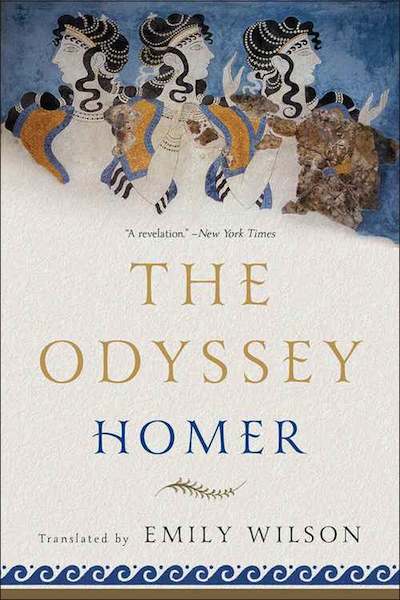
Having invested a decade assisting Menelaus with his marital troubles, not to mention a brief but memorable foray into the equestrian miniatures hobby (albeit in the unusual 20:1 scale), one might expect Odysseus to rush back to his beloved wife Penelope. One would further expect the journey to be a brief one, as Troy was but 565 nautical miles from Odysseus’ Ithaca1. In fact, the trip took a good ten years.
Several factors facilitated Odysseus’ extended tour of every monster-and witch-haunted island between the smoldering ruins of Troy and Ithaca. First, ancient ships of the 12th century BCE were not well-suited to unbroken long sea voyages. Second, Odysseus’ companions were bold souls as eager to accidentally squander magic treasure as they were to offend a powerful witch. Finally, Odysseus’ travel plans were subject to revision by the god Poseidon, who did his best to ensure the trip home would be memorable.
Odysseus did not set out to offend a god. Having done so, he had the rare combination of unparalleled cunning, courage, and being the protagonist of an epic poem named after him to help survive the consequences. Anyone care to guess how many of Odysseus’ companions made it home alive?
Star Rangers by Andre Norton (1953)
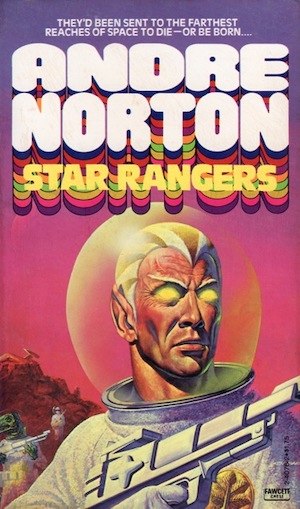
After three thousand years of empire, Central Control is no longer central or in control. Calamity for Central Control is opportunity for would-be local warlords. Across the crumbling empire, ambitious functionaries carve out realms of their own. Patrol ships like Starfire might prove impediments to collapse. Thus, the Starfire’s final mission…
Starfire is dispatched to chart uncharted worlds for as long as it takes for the crew to perish. Not everyone does. The ship crash-lands and the lucky survivors set out to explore their new world. Their final world. A place known as Arth.
Readers might have assumed that because Norton’s target market was teenaged boys, she’d soft-pedal the dire situation in which her characters found themselves… such readers would be surprised when they actually read the book. Norton highlights some surprising grim elements, from genocidal bigotry to the epidemiological hazards of travel to long-isolated worlds.
Marooned by Martin Caidin (1964)
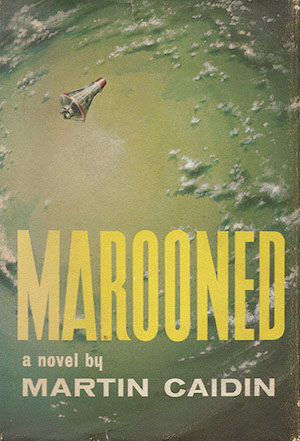
NASA’s most recent bid to place a man in orbit is a resounding success. Returning him safely to Earth is another matter. The retro-rockets on Major Richard J. Pruett’s vehicle malfunction. Without them, the Mercury capsule will remain in orbit. With his air rapidly running out, and no means to effect repairs, Pruett’s only course of action seems to be to come to terms with mortality.
Jim Dougherty believes rescue is possible. To achieve it, tremendous technical challenges must be surmounted. A naïve person would conclude that delivering a two-man Gemini capsule to orbit within the forty-eight hours before air runs out is impossible. It is… unless help arrives from a very unexpected source.
Viewers familiar with the 1969 version of the novel and/or the film of the same name may find the description unfamiliar. This is because the filmmakers took liberties, not least expanding the cast of castaways from one to three, and Caidin revised his novel accordingly. In one of those odd quirks of fate, the film had its brief theatrical release shortly before the Apollo 13 mishap, a more serious crisis that the real NASA handled more adroitly than the fictional characters of Caidin’s novel.
The World Is Round by Tony Rothman (1978)
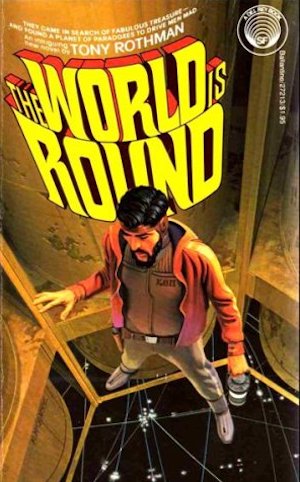
Returning from a recent mission, Hendig’s tale of an impossibly huge, yet habitable planet in the Barythron system is manifestly nonsense. Nevertheless, the riches to be won if there’s even a kernel of truth in the story inspires businessman Pike to fund and mount an expedition to Barythron. Astonishingly, unreliable Hendig has told the truth: Barythron’s habitable world is the size of a gas giant, yet has a solid, habitable surface. How can this be? Because the world in question, Patra-Bannk, is a vast artifact.
It is a truth universally acknowledged, that a world-sized artifact in possession of a mysterious past, must be in want of castaways forced by circumstance to explore. The crew wastes little time getting scattered, marooned, captured by locals, and thoroughly entangled in local politics. Along the way the visitors will learn much about Patra-Bannk. Or at least the survivors will.
A gas-giant-sized world is impractically huge to explore on foot. Therefore, it is helpful that the builders provided rapid transit. As well, the builders seem to have put considerable thought into ensuring the artifact was self-sustaining. As it turns out, not quite self-sustaining enough. Still, one good solar flare won’t send it falling into its sun, unlike certain other megastructures I could mention.
The Martian by Andy Weir (2011)
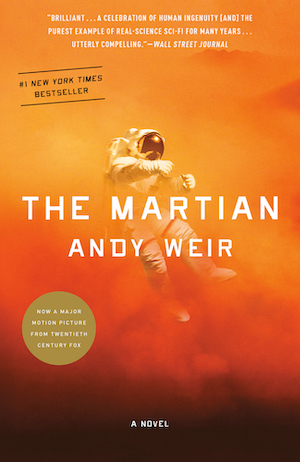
Threatened by an encroaching sandstorm, the Ares 3 crew cut short their stay on Mars, fleeing to the safety of their orbiting spaceship Hermes. Or rather, all but one of the crew flee. Mark Watney, impaled by flying debris, is left for dead on Mars.
Mark is not dead. Mark would like to remain not dead. Furthermore, Mark would like to return to Earth. Rescue depends on factors outside Mark’s control. Staying alive long enough to give his crewmates and the team on Earth a chance to pull off an implausibly bold rescue bid is up to Mark. Can Mark survive Mars’ hostile environment? Can Mark survive the unexpected consequences of his own innovative schemes?
To some, the film adaptation of this provides yet another example of why America should stop sending Matt Damon places. I remember the novel fondly as one of the works that ended a several-decade-long drought of near-future, hard SF novels set in the Solar System.
As long as there has been travel, travelers have been encountering unforeseen complications. The above are only a few of the works I could have mentioned—I didn’t even get to Robinson Crusoe on Mars! Feel free to regale us with exemplary works I’ve overlooked.
- Odysseus’ Ithaca is not the one in New York State.





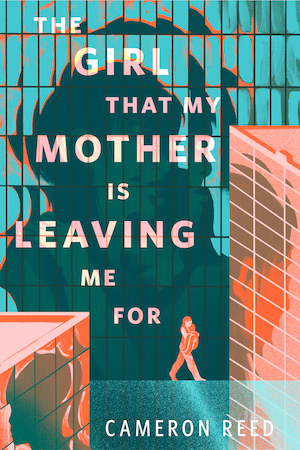





A hat tip to Poul Anderson’s Tau Zero, which worked out about as well as one would expect given a starship named for a woman famous for spending two decades in solitary confinement.
The Long Way Home, by the same author, involves the long test flight of a supposed FTL drive that turns out to be subject to Einsteinian constraints after all. The crew comes back to Earth to find they’ve been away for over five thousand years, not the small amount of time that had elapsed for them on their flight.
One of his earlier efforts, but I liked it.
I have a copy of that translation of the Odyssey. Someday it’ll bubble up to the top of the To Be Read pile.
RE the footnote. Now I’m getting a vague memory of a long after the (or a) apocalypse story where a Schliemann type is looking for Troy and finding signs on what turns out to be the New York Thruway, or something like that, for Ithaca, Troy, and other legendary places…
“one good solar flare won’t send it falling into its sun, unlike certain other megastructures I could mention.”
I don’t get the reference. Can you please add a footnote?
Ringworld is unstable in orbit.
Probably Larry Niven’s Ringworld. The ringworld is at an unstable equilibrium, and would fall into its sun if slightly pushed (like by a solar flare). This was retconned in the sequels.
An engineer sent him a treatise with equations explaining the problem. Niven thanked the man for his work (and mentioned him in a foreword somewhere, I believe) and then decided to make the bug into a feature.
@Ken Selvren
Ringworld
Rex Gordon’s No Man Friday is another for the “spending a much longer time on Mars than planned” pile. The first half is the protagonist engineering his survival; the second is basically him contemplating giant migrating Martians for years. I’m very fond of it; it doesn’t really handle the shift between the two parts very well but it’s a valiant try.
Blish’s Welcome to Mars features as protagonist a teen smart enough to build an antigravity device able to deliver him to Mars but unwise enough not to bring spare vacuum tubes in case one burns out.
And a “rescuer” who makes exactly the same mistake…
IIRC that critical vacuum tube was expensive.
The rescue mission landed kinda hard. Was that how the tube broke that time?
Becky Chambers’ The Galaxy and the Ground Within has a group of travelers on a six hour stop on a not too habitable planet extended to several days, due to an orbital ‘incident.’. All turns out well, possibly due to the fact that there are no humans in the story to mess things up.
This belatedly reminds me of Gilligan’s Island, where a three-hour tour lasts far longer than its planned duration.
Minnow’s cruising speed would have been about 12 knots, which suggests their maximum distance from port was to be no more than 18 nautical miles, which in turn suggests that either the storm blew them a considerable distance or people were not looking for the castaways very diligently.
I always figured that relatives of the Howells were trying to murder them for their money, and were willing to wait the 7 years or whatever to have them declared legally dead.
Option A seems plausible; that’s what storms do, even if they aren’t as effective as in Schenk’s “Wave Rider”.
The example that comes to mind is Madagascar, settled by Austronesian people, presumably from around what is now Indonesia, 8000 KM away.
This is such a classic story structure. Philip Jose Farmer’s The Green Odyssey is an explicit tribute to Homer. And like the wily Odysseus, Vance’s Cugel the Clever is a disaster for pretty much everyone he meets. In other Vance, Big Planet and the three-book Planet of Adventure series both begin with the hero’s space ship being shot down. And in Job: A Comedy of Justice Alex is taking a perfectly routine pleasure cruise when the ship unexpectedly sinks.
Sorry to nitpick but Jack Vance’s “Planet of Adventure” series is 4 books not 3. “The City of the Chasch”, “The Servants of the Wankh”, “The Dirdir” and “The Pnume”.
You’re right of course. Put it down to my bad memory. Some of those have now been retitled.
Yes, when “The Servants of the Wankh” was first published in the UK it had an unexpected spike in sales owing to the locals assuming “Wankh” (Vance’s name for an alien race) was the same as “wank” (a British idiom for masturbation) and thus that the book was porn. In his autobiography Vance said he was rather embarrassed about this. Later editions changed the name to “Wannek”.
Cugel is a disaster for others because he’s a disaster for himself.
To some extent: he does continue to survive and cause trouble for further people.
In cinematic versions, Robinson Crusoe on Mars fits this as well. The protagonist even gets in some touring, going the Martian north pole via the canals.
Heinlein’s Tunnel in the Sky features a group of high school students taking a survival test where they are teleported to an unoccupied planet to get by for 2-10 days on their wits and what they have carried with them. Pickup comes years late, with a lot of colonization in the meantime.
The premise of Cherryh’s Foreigner series involves a ship that sets out to establish new station colony a few dozen lightyears further out (probably, although not explicitly setting out from one of the Alliance-Union setting polities). Something goes wrong with the drive, and when the drop out of warp they’re so far from home they can’t find a single familiar star. 500 years later they still haven’t, and their desendants live in an uneasy peace with the aliens whose world they found.
Also, of course, Star Trek: Voyager
The Hobbit is an unexpectedly long journey there and back again.
I dunno, there is a map, inside the book cover. But there are issues like losing supplies.
I suppose there is an indefinite time, I mean I’ve forgotten, in the dungeon in Mirkwood. And however long the business at Erebor takes.
And indeed we get back to Hobbiton to find that they decided there that Bilbo Baggins was legally dead anyway.
Those are not the best waves I’ve seen in paintings but they are pretty good.
A. Clarence “Silverlock” Shandon was not planning on spending a while mostly-walking across the land of story, but that’s what he got handed when his ship foundered. (We’re never told where he was going in the first place, or why, but it doesn’t sound as if he was planning to be sailed around aimlessly forever.)
Most of the versions of the Flying Dutchman that I’ve seen cover just the effects of a single shore visit, rather than what their journey has been through the ?centuries?; Tom Holt’s Flying Dutch gives a little more detail.
If you want a long journey… Earl Dumarest’s return to his home planet Earth, as chronicled by E.C. Tubb over thirty-three volumes, probably counts.
I read some of those, many years ago. Does he ever find it?
Not till he met Lorne Green (oblique reference to the first Battlestar Galactica, which had a rather large number of similarities to the Dumarest books).
The Martian was ridiculously cool and I agree – it seriously scratched the hard-SF itch. I hadn’t realised how much I’d been missing that in novels!
(Barely relevant, but incidentally, I picked my username after leaving Ithaca-the-New-York-one. An idle thought based on the title of an album by Syracuse piano-pop guy Joe Lorenz: So Far Upstate. In my case, even more so, because I’d moved to Ontario.)
Kim Stanley Robinson’s Aurora would fit the bill – a generation ship reaches its destination, finds the target planet is biologically incompatible with humans, so it makes a return trip home to Earth.
Also similar and more recent is Michael Mammay’s Generation Ship where the ship reaches its target planet, but conflicts among factions and problems on the planet cause difficulties.
I found Aurora unexpectedly hilarious. The moral supposedly being “Humans cannot survive away from Earth”…and yet one isolated, badly designed and run colony ship does so for centuries…
Odysseus is – above all – held by the nymph Nausikaa for seven years of the ten it takes him to get home. He is promised immortality and eternal youth and revelry in anything you might imagine. But he is unhappy, he longs for home, for family, for, well, being mortal.
Odysseus is a human after the Bronze Age, after the Iliad. The gods of ancient Greece – what are they? No risks, as they are immortal. No adventure without risk. No real stakes there. Do they do any work worth mentioning? No, and they even couldn’t if in a pinch, except for a single one of them. So, Odysseus rather chooses mortality than this eternal state of indifference or, at most, childish quibble the way that Ares, the god of war, understands it (running back to mum when wounded by his sister Athene). If death were not the price for living, what does one strive for? That is what a human is made for, and he yearns for it.
During the Bronze Age, it was all great gods, heroes with superhuman strength and endurance. Gods that yet were all too human in their vices and arguments. The new archetype is Odysseus, the thinker, although also great warrior. And thus Troy falls by the horse, not raw violence. That age rather fits Athene, the wise, as the goddess to watch over Athens, with the wise owl as the city symbol.
Also, look at Hephaestus, the god of forging. He can create life, in a way, with his automata, the other gods can’t except by banal progeny. He may be ugly, deformed, dirty, but he is the most equal to a creator among all the gods. His wife is Aphrodite, the beauty queen among the goddesses. He even shames the adulteress and her lover – Ares, of all the gods – by catching them in a web and exposing them to the laughter of the other gods. The supposedly ugly little twerp repays the god of war only to fittingly by revealing him as the empty boaster he in fact is.
Odysseus is the new human, self-confident, using his mind and wit, his strength when needed. The gods that fit this age are the wise and the maker. It is an age of mechanics and technics and of those who dare to think and calculate. This attitude already bears the seed of science in it, as the Greek start to want to explain nature without resorting to gods and other mythical beings. It is what made Athens so great (and greedy and chauvinistic at times) and laid the foundations for our modern world view.
Calypso, not Nausikaa. Nausikaa is the marriageable young lady who finds him on a beach after his departure from Calypso’s island.
Then there’s Spinrad’s “Riding the Torch”, in which the trip is proven to be more worthwhile than the destination.
Because it remains one of my favorite ripping yarns ever and a cornerstone of modern SF, I have to mention the seminal Twenty Thousand Leagues Under the Sea by Jules Verne (1870). Poor Professor Aronnax gets more than he bargained for when the critter he’d been expecting turns out to be a submarine and whisks him along for a ride.
Perhaps a mention for the singer/narrator in Styx’s “Come Sail Away”?
Queen’s In the Year of ’39?
In Harry Harrison’s Star Smashers of the Galaxy Rangers, a simple test flight goes much further than planned.
Since you mentioned it–its prime parodic target, Doc Smith’s Skylark series, starts with a ship accidentally getting stuck on maximum acceleration and only running out of fuel many light years from Earth.
See also Non-Stop (1958) by Brian Aldiss, about a returned generation-ship whose mission had failed because of an epidemic, and which has been in a quarantine orbit around Earth for generations.
With regards to Odysseus’s hobby – surely once a model exceeds 1:1 scale it becomes a maxiature rather than a miniature?
The first time I hit this concept was also Jules Verne, but “Mysterious Island.” A very long tome of stranded balloon-ists (spies) during the Civil War who get blown way off course and crash on a, well, mysterious island. They struggle to survive until discovering forementioned strange submarine captained by the same guy. Also unexpectedly long journey.
I read that as a teen and was surprised by the character’s return in what I had thought was an unrelated novel.
Robert Sheckley’s “Dimension of Miracles” involves Carmody in an unexpected journey. “Mindswap” has a planned journey but problems arise.
The Sheckley novel that occurred to me was “Options” where a spacecraft pilot is marooned with a robot because an important part has broken and the craft can’t leave until it’s replaced. Unfortunately it turns out not even the author can get him the needed part.
In David’s Brin EARTH part of a space goes big time thataway, though we never find out what happens to them when the gravity wave does its first fandango.
It feels like The Swiss Family Robinson could fit here, if only adjacent.